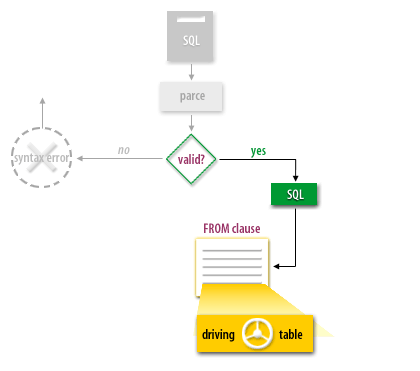| Lesson 5 | Positioning statements in the FROM clause |
| Objective | Correctly order table names in the FROM clause. |
Positioning statements in FROM Clause
The order of the table names in the FROM clause determines the
driving table for the rule-based query. It is very important to place the table that will return the smallest number of rows last
in our FROM clause.
The driving table
To review, rows from the driving table are retrieved first, and rows from the other table are then probed for corresponding values.
Therefore, it is essential that the second table return the least amount of rows based on the WHERE clause. The driving table is the table that will return the smallest number of rows, based on the filters in the WHERE clause. This is not always the table with the smallest number of rows.
An example
For example, let’s assume that we have a distributed Oracle database with customer tables on several locations. One customer table resides in London and another in New York, and the distribution of data is shown below.

The problem is that the data is skewed. We have the vast majority of customers in New York, so the London table should be last for unqualified queries. For an unqualified query against these tables, we should specify the New York table first, since London has the least amount of returned rows:
SELECT Customer_name FROM customer@new_york, customer@london ;
However, if we query for bad credit, we should put the New York table last, since New York has far fewer deadbeats than London.
SELECT Customer_name FROM customer@london, customer@new_york WHERE Credit_status = ‘BAD’ ;Changing the order of table names in the FROM clause can have a dramatic impact on the performance of nested loop joins[1] . It is common to double the performance of a rule-based query with this technique.
Now, let us look at how the order of Boolean operators can also affect the performance in the WHERE clause.
Positioning Statements from Clause - Exercise
Before you go on, click the Exercise link below to practice what you have just learned.
Positioning Statements from Clause-Exercise
Positioning Statements from Clause-Exercise
[1]Nested loop join: This is a join method that queries the driving table and then probes the other tables via an index.